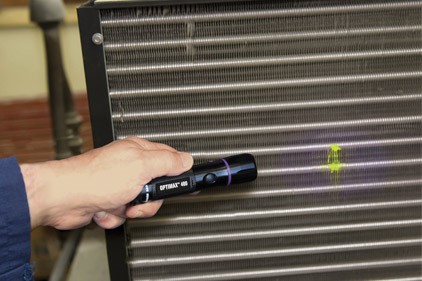Leak Search
Leak-Searching HVAC Equipment: Searching for loss of refrigerant within the cooling stages of AC systems.

When a piece of HVAC equipment has lost its refrigerant, or shows signs of unusually low refrigerant levels and pressures, we recommend a leak search. We often suspect leaks when our test gauges do not indicate proper pressures, we see oil residue within the unit, or physically witness escaping refrigerant.
Not locating a potential leak can become a cause of complete AC system failure and substantial repair costs not to mention comfort issues.
Definition: An AC leak test with nitrogen or electronic leak detection device is used to locate the location or source of refrigerant loss.
If the leak is determined repairable, the general course of action is to remove and replace liquid line drier, repair the leaking spot, and top-off the system with appropriate refrigerant charge per the manufacturers specifications as listed on this units’ nameplate.
If the leak is determined non-repairable, we gather information needed and prepare a quote for:
- Replacement of the part (often the coil), OR
- Replacement of the unit entirely.
Scope of Work
- Perform electronic leak search to identify the leaking component and either repair or quote replacement.
- Determine if the leak is in a location that is repairable.
If the leak is determined repairable, the general next course of action is to remove and replace liquid line drier, repair the leaking spot, and top-off the system with appropriate refrigerant charge per the manufacturers specifications as listed on this units’ nameplate.
If the leak is determined non-repairable, we gather information needed and prepare a quote for:
- Replacement of the part (often the coil), OR
- Replacement of the unit entirely
Additional Details
Due to the nature of Leak Searching, often times we’re only able to provide a budget for the “search,” and include labor and materials to attempt common repairable patches and soldering. It should be noted that due to the nature of repairing leaks, they are technically a temporary solution and while they may last many years, they are not covered under any warranty.
This article has been shared by Direct Service, Construction and Design to specifically accommodate our intended clientele. The intent of sharing this information is to better inform the public of these general topics, expand knowledge and safety for all and provide crucial information in regard to their MEP and building systems and/or assets. It is NOT our recommendation that any article recommendations or how-to scenarios be attempted by anyone other than a qualified or competent person.
